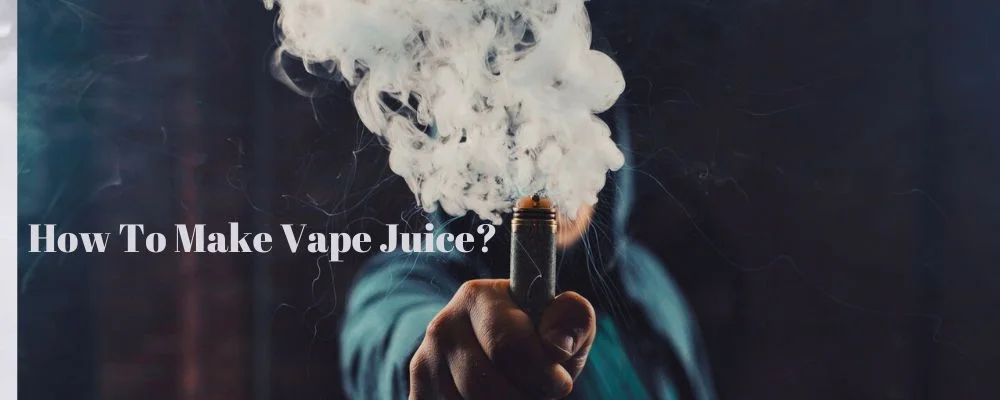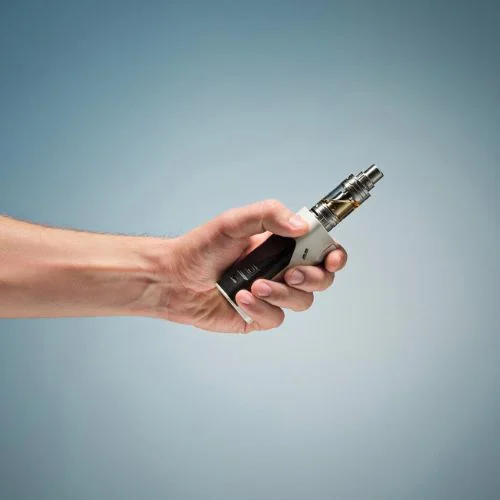Part 1: Introduction and Basics
Introduction
Making your own vape juice is not just a trend, but a way for vapers to customize their experience. With the rise of vaping, many enthusiasts have turned to DIY methods to create their own unique blends. This not only allows for a personalized touch but also offers a cost-effective solution to store-bought variants.
One of the primary benefits of DIY vape juice is the ability to control every aspect of the mixture. From the nicotine strength to the flavor intensity, everything can be adjusted to one’s preference. Moreover, DIY methods ensure that there are no unwanted additives or preservatives in the mix. For those who are health-conscious or particular about the ingredients they inhale, this is a significant advantage.
What is DIY Vape Juice?
DIY Vape Juice, as the name suggests, refers to the homemade version of e-liquid used in vaporizers and e-cigarettes. It’s the liquid that gets heated up to produce the vapor that one inhales. The primary purpose of making your own vape juice is to have complete control over the ingredients and the flavor profile.
The customization benefits are endless. Whether you’re after a specific flavor that’s not available in the market, or you want to experiment with different flavor combinations, DIY vape juice gives you the freedom to do so. Moreover, for those who are particular about their nicotine intake, making your own juice ensures you know exactly how much nicotine you’re consuming.
Equipment Needed for DIY Vape Juice
When it comes to making your own vape juice, having the right equipment is crucial. Here’s a breakdown of the essential tools you’ll need:
- Bottles: These come in various sizes.
- 5ml and 10ml bottles are ideal for measuring and mixing tester flavors.
- 30, 50, and 100ml bottles are perfect for storing larger quantities of your favorite blends.
- Measuring containers: Precision is key when making vape juice. While some DIYers might rely on guesswork, it’s always best to measure out your ingredients accurately. This ensures consistency in flavor and nicotine strength. Containers like beakers or measuring cups can be handy, especially when making larger batches.
- Syringes/Pipettes: These tools are essential for accurate measurements. Whether you’re adding nicotine, PG, VG, or flavor concentrates, syringes and pipettes ensure you’re adding the exact amount needed. They can be easily sourced from online vendors like Vaping360 or local stores.
- Gloves: Safety first! When handling nicotine or other chemicals, it’s essential to protect your skin. Gloves not only offer protection but also ensure cleanliness, preventing any contamination during the mixing process.
- Kitchen roll: Spillages are bound to happen, especially if you’re new to the DIY scene. Having kitchen roll on hand is great for cleaning up any mess, wiping down equipment, and ensuring a clean workspace.
By ensuring you have the right equipment and following safety precautions, making your own vape juice can be a fun and rewarding experience. Whether you’re a seasoned vaper or just starting out, the world of DIY e-liquids offers endless possibilities for customization and experimentation. For more detailed steps and insights, consider checking out resources like RosedaleKB’s guide for beginners.

Ingredients for Vape Juice
Crafting the perfect vape juice requires a blend of key ingredients, each contributing to the overall experience. From the throat hit to the flavor and the vapor’s density, every ingredient plays a crucial role. Let’s delve into the primary components of vape juice and understand their significance.
Nicotine Shots
Nicotine shots, commonly referred to as “nic shots,” are concentrated nicotine solutions added to e-liquids to achieve the desired nicotine strength.
Types:
- Freebase Nicotine: This is the most common form of nicotine used in e-liquids. It’s pure and offers a more direct and pronounced throat hit.
- Nicotine Salts: A newer form of nicotine, it’s derived from the salts found in tobacco leaves. Nicotine salts provide a smoother throat hit and are absorbed faster, closely mimicking the sensation of smoking a cigarette.
Legal Considerations:
Different countries have varying regulations concerning the sale and use of nicotine.
- In many places, there’s a limit to the nicotine strength that can be sold. For instance, in the UK, the maximum strength is 20mg/ml.
- The size of nicotine bottles is also regulated in some regions. In the UK, for example, you can’t buy a nicotine solution bottle larger than 10ml for personal use.
- Always check local regulations before purchasing or traveling with nicotine products.
PG and VG Liquids
Propylene Glycol (PG) and Vegetable Glycerin (VG) are the base liquids in vape juice. They carry the nicotine and flavor and produce the vapor when heated.
Differences:
- PG (Propylene Glycol):
- Thinner consistency.
- Carries flavor more effectively.
- Produces a stronger throat hit, similar to smoking.
- Less vapor production compared to VG.
- VG (Vegetable Glycerin):
- Thicker consistency.
- Slightly sweet taste, which can affect the overall flavor.
- Produces a smoother throat hit.
- Generates more vapor, leading to cloudier exhalations.
Purposes:
- Balancing Throat Hit and Vapor: By adjusting the PG/VG ratio, vapers can tailor their experience. A higher PG ratio offers a sharper throat hit, while a higher VG ratio gives denser clouds.
- Flavor and Consistency: PG is better at carrying flavor, making it preferred for flavor-focused e-liquids. VG, with its thicker consistency, is favored for “cloud chasing” or producing large vapor clouds.
Vape Juice Flavor Concentrates
Flavor concentrates are what make vaping a diverse and enjoyable experience. From fruity to dessert-like, from minty to tobacco-flavored, the possibilities are endless.
Variety:
- Fruit Flavors: Popular choices include apple, berry, citrus, and tropical fruit mixes.
- Dessert Flavors: These replicate the tastes of favorite desserts like vanilla custard, chocolate, and pie.
- Menthol and Mint: For those who want a refreshing kick.
- Tobacco Flavors: Ideal for those transitioning from smoking, they mimic the taste of different tobacco blends.
Mixing Tips:
- Start Simple: If you’re new to DIY e-liquids, begin with a single flavor. Once you’re comfortable, you can experiment with combinations.
- Less is More: Overloading on flavor can lead to a muted or unpleasant taste. Typically, flavor concentrates make up 10-20% of the total mixture.
- Steeping: After mixing, let your e-liquid steep. This allows flavors to meld, resulting in a more rounded and intensified taste.
In conclusion, understanding the ingredients of vape juice is crucial for both safety and crafting the desired vaping experience. Whether you’re a DIY enthusiast or just curious about what goes into your e-liquid, a deeper knowledge will undoubtedly enhance your vaping journey.
Step-by-Step Guide to Making Vape Juice
Making your own vape juice can be a rewarding experience, allowing you to customize flavors and nicotine levels to your preference. Here’s a detailed step-by-step guide to help you craft the perfect blend:
Step 1: Determine Your Vape Fluid Measurements
Before you start mixing, it’s essential to decide how much vape juice you want to make and its desired nicotine strength. This will dictate the amount of each ingredient you’ll need.
- Use a vape juice calculator to help determine the right measurements.
- Decide on the VG/PG ratio. A common ratio is 70/30 VG/PG, but this can be adjusted based on preference.
- Determine the nicotine strength. If you prefer a stronger hit, you might opt for higher nicotine levels.
Step 2: Prepare Your Base Mixture
The base mixture consists of Propylene Glycol (PG) and Vegetable Glycerin (VG). These are the primary carriers for your flavor and nicotine.
- Measure out the PG and VG based on your earlier calculations.
- Use syringes or pipettes for accurate measurements.
- Pour the PG and VG into a mixing container or beaker.
Step 3: Add Flavor Concentrates
This is where the magic happens. The flavor concentrates will define the taste of your vape juice.
- Decide on a single flavor or a combination. For beginners, starting with a single flavor might be easier.
- Measure the flavor concentrate using a syringe. Typically, flavor concentrates make up 10-20% of the total mixture, but this can vary based on personal preference.
- Add the flavor concentrate to your base mixture. For more insights on flavor combinations, consider checking out resources like Vaping360.
Step 4: Add Nicotine
Nicotine gives the vape juice its kick. It’s essential to handle nicotine with care, as it can be harmful in large quantities.
- Wear gloves when handling nicotine to prevent skin contact.
- Determine the amount of nicotine based on your desired strength.
- Add the nicotine to the mixture using a syringe or pipette.
Step 5: Mix and Bottle
Once all the ingredients are combined, it’s time to mix them thoroughly.
- Stir the mixture gently but thoroughly to ensure even distribution of flavors and nicotine.
- Once mixed, transfer the vape juice into storage bottles using a clean syringe or funnel.
- Seal the bottles tightly to prevent any contamination.
Step 6: Steeping Your DIY Vape Juice
Steeping allows the flavors to meld and develop, enhancing the overall taste of the vape juice.
- Store the bottled vape juice in a cool, dark place.
- Allow the vape juice to steep for at least a week. Some flavors might benefit from longer steeping times.
- Shake the bottles once a day to help with the steeping process.
Crafting your own vape juice might seem daunting at first, but with practice and experimentation, you can create unique blends tailored to your taste. For more detailed insights and tips, consider exploring resources like RosedaleKB’s guide for beginners.
FAQs
- How long should I steep my vape juice?
- While some flavors might be enjoyable right after mixing, most benefit from steeping. The typical steeping time ranges from a few days to several weeks, depending on the flavor profile.
- Can I mix multiple flavor concentrates?
- Absolutely! Many DIY vapers enjoy blending different flavors to create unique profiles. It’s all about experimentation.
- Is DIY vape juice safe?
- As long as you follow guidelines, use quality ingredients, and ensure cleanliness during the mixing process, DIY vape juice is as safe as commercial e-liquids.


